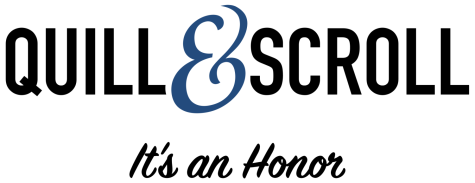Burning Questions about Blogs
David Schwartz
Executive Director
Iowa High School Press Association
If we’re going to write a column about blogging, let’s first address a burning issue: Nobody knows, exactly, what blogging is. Or rather, everybody knows what it is, and the answer is, “Everything.” Blogging is a diary. Many of us read blogs detailing the intimate details of someone’s personal life. Or about becoming a vegetarian. Or about their favorite musicians. Blogging can also be a collection of other sites – an online directory to help readers interested in a topic to funnel through the muck to find sites that interest them. Or a blog is a community of people discussing a specific topic. Or a blog is a forum for public opinion. The point is, it’s a broad term that is difficult to define. For the sake of this discussion – how students can blog effectively – let’s treat blogging as an extension of journalism. Today, blogging is as effective a tool for high school journalism as Microsoft Word and the Adobe Suite. After face-to-face interaction, blogging, along with Twitter and Facebook, are the three most intimate means for high school journalists to interact with their readers. It’s a chance to explain what went into a story, to report facts that maybe didn’t quite fit in the story but are still worth reporting, or for a reporter to push the story forward with a “what’s-next?” angle. Plus, journalism and mass communication schools hold journalistically focused high school bloggers in high regard. Blogging provides another opportunity to pad a college résumé. All great opportunities, to be sure. But how do you introduce blogging to your staff? And how do you police it?
Where to begin?
In November, the Journalism Education Association’s wonderful digital media site, jeadigitalmedia.org, ran the headline, “Don’t Buy Dreamweaver – You’re Making a Huge Mistake.” Among the reasons cited for using a Joomla, WordPress or Drupal content management system for your publication’s Web site is the relative ease of a CMS. There is less need for techie know-how and students can work from home. This also applies to your site’s blogs. If you’re already running your site through a CMS, adding a blog will be simple. Create a new page or a new post with the proper parent page (the page under which the blog will appear, such as “Blogs” … “Sally’s blog”) and you’re set. If you are still using Dreamweaver, FrontPage or some other do-it-yourself program, you might want to consider an external blog host. The good news is that most of these are free. The most popular are Blogger.com (supported by Google) and WordPress.com. There are others, but these two will give your students the tools they need to be up and running in a matter of minutes. Your URL will look something like this: highschoolname.wordpress.com or highschoolname.blogspot.com. Blogger and WordPress sites are hosted by the parent companies, not your publication’s site. That means your publication will need to link to the external blogs; and at first the look of your blogs will differ from the look of your publication. That’s OK. In time you and your staff will learn how to easily manipulate the looks of free WordPress and Blogger blogs so that they will conform to the look of your publication.
What are we supposed to blog about?
Great question. It’s up to you and your staff to decide what is blog-worthy. Some high school publications that are already blogging vary content. Blogs about the football and girls and boys basketball teams are common. Or a staff member can blog about prom preparations, or school board issues, or the daily choices in the cafeteria. The point is, your options are as wide or narrow as you make them.
Adviser control
I understand the fear some advisers have about allowing their students to blog. The No. 1 fear I hear is that advisers will have no control over when their students blog and what they blog about. This is valid. Imagine having to explain to an administrator that one of your students potentially libeled a classmate while blogging on the school’s news site at midnight – after having a fight with that classmate. Just thinking about that conversation gives me shivers. So approach it this way: Make blogging a privilege. You don’t give the keys to your classroom to every
student in your media class, but you might give it to your editor-in-chief and a trusted section editor or two. The same rule should apply to blogging. Because blogging allows students to update from a computer lab, their home and even their cell phone, use caution when selecting which students to grant blogs. Once you and your editor have selected your bloggers, provide them a set of rules and expectations. And always – always! – keep a copy of the blogs’ log-in names and passwords. You never know when you might need to delete a post.
If your site is running a content management system such as Drupal, Joomla or WordPress, adding a blog should be incredibly easy. In fact, it’s likely already part of your template. If your site is built through a program such as Dreamweaver, however, consider setting up your blog using one of these free sites and linking to the blogs from your site:
•Wordpress.com
•Blogger.com
•Typepad.com
•LiveJournal.com
•YouTube (video blog)

